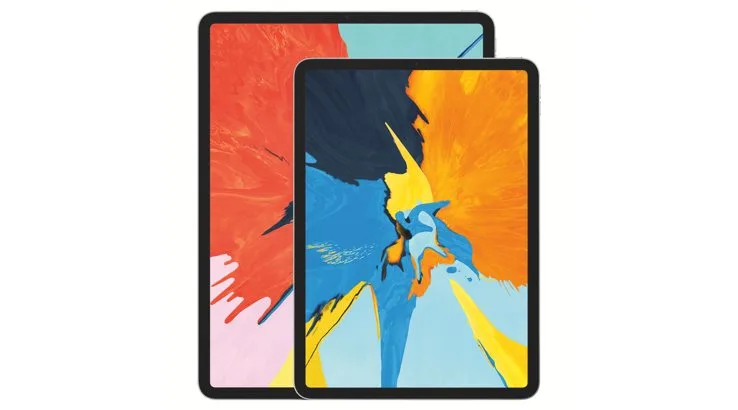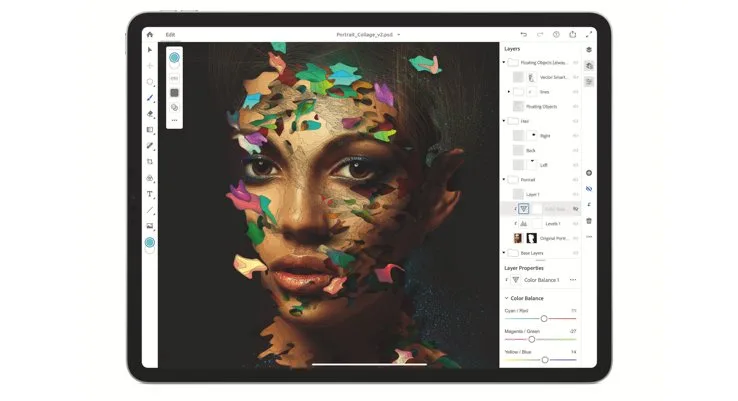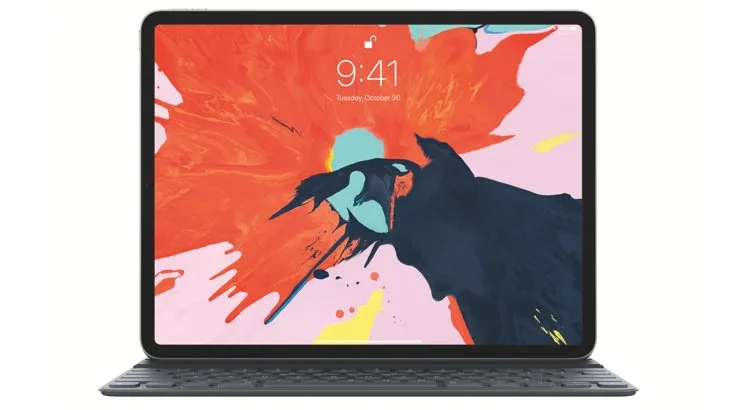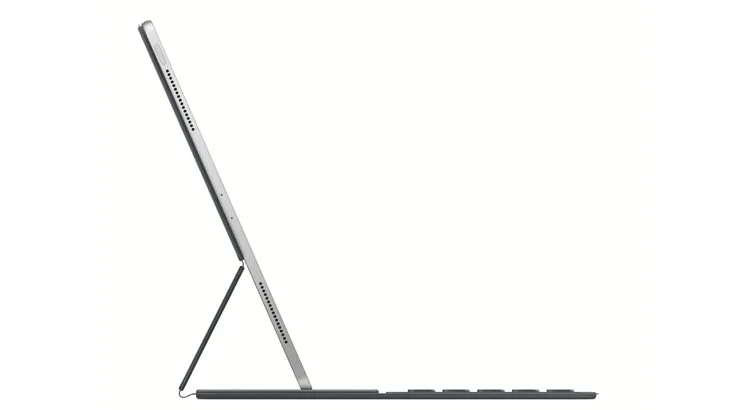Apple iPad Pro (2018) review: Amazing power hampered by iOS
Apple has thrown some amazing hardware and a useful redesign at the iPad Pro 2018 range, but the limitations of iOS and its asking price mean that this is a tablet only for a small niche of users.
Quick Verdict
The 2018 iPad Pro is the most revolutionary upgrade Apple's made with the iPad line, with superb performance, great battery life and a much welcomed shift to USB C. However, the underlying iOS architecture limits what you can do with all that power, and peripheral support is still a bit sketchy. At the asking price, most users would be well served with the regular iPad.
The good
- Great design.
- Best Apple keyboard in years on the keyboard case.
- Excellent performance from the A12X Bionic.
The bad
- iOS still seriously limits what you can do with your files.
- No headphone jack.
- USB C peripherals might work... or they might not.
Apple’s contention for its iPad Pro lines has long been that they are not mere consumption devices, but instead fully professional tools. With the iPad Pro (2018), it’s closer than it’s ever been before in terms of hardware, but the inbuilt limitations and controls on iOS make for an experience that’s still just as much frustrating as it is fabulous.
Apple iPad Pro 2018: Design
- Boxier design, but with a professional look.
- Lightning out, USB C in.
- Great keyboard case.
- New Apple Pencil doesn't work with earlier iPad Pro.
The design of the iPad Pro has also undergone some quite significant changes, although some of them almost make it seem like a throwback device.
Where iPad design has tended to mirror iPhone design to an extent, with ever more slender profiles, Apple’s instead gone back to the design documents for the original, slightly more bulky iPad to produce the iPad Pro. The end result is a device that measures in at either 247.6 x 178.5 x 5.9mm for the 11 inch iPad Pro or 280.6 x 214.9 x 5.9mm for the 12.9 inch variant, which is what I've tested with.
Either way, it's less curved than last year’s model with squarer sides, but that's not a bad thing per se for what is, after all, meant to be a laptop replacement. It draws a distinct "professional" line between the iPad Pro and iPad lines, if nothing else.
The other major change is, of course, that this is the first iPad model of any type not to use Apple’s own proprietary plug standard. We’ve gone from the 30-pin dock connector to the Lightning connector, and Apple has now settled on using the open USB C plug standard for both charging and peripheral connectivity. It makes it easier to connect up an iPad Pro to a MacBook Pro, although a little fiddlier for Lightning-connected devices such as iPhones, and it does rather leave open whether Apple will shift to USB C fully for next year's phone models.
Apple doesn’t specify which USB C peripherals will work with the iPad Pro.
However, there’s only the single USB C port, so it’s a question of either charging or using an external peripheral. It’s theoretically possible you may be able to use a USB-C connected dock (and third parties may build similar) for use with the iPad Pro, but it’s also important to recognise that Apple doesn’t specify which USB C peripherals will work with the iPad Pro. So far, there’s no equivalent of the "MFi" certification for iPad Pro USB C peripherals.
One feature you'll have to do without is a headphone jack. Apple would dearly like you to buy some of those nice wireless Beats headphones it spent so much money on, or at least pony up for a USB-C to 3.5mm adaptor. As with its 2018 iPhone lines, you're not provided with one in the box, which is annoying on a computer that Apple charges a significant premium for.
The iPad Pro also drops the TouchID-enabled home button in favour of Apple’s own FaceID platform. This does leave Apple with a lot more space for the 120Hz capable LCD display. It's not quite bezel-free, but compared to other iPad models, the lack of TouchID does give it the feel of having more screen space, or in the case of the 12.9 inch model tested, being smaller. Which it actually is, so if you shifted from the old 12.9 inch iPad Pro to the newer model, you'll be hefting around a smaller computer.
Like Apple’s previous iPad Pro displays, the iPad Pro LCD display is beautifully colour balanced, but then Apple intends for the iPad Pro to become a platform for, amongst other uses, Photoshop, so accuracy is a must.
It's also a really nice platform for watching Netflix video, thanks to the powerful array of speakers underneath the glass. Not that you'd ever use a pro tool to relax on the weekend... or at least, not that you'd tell your boss about, anyway.
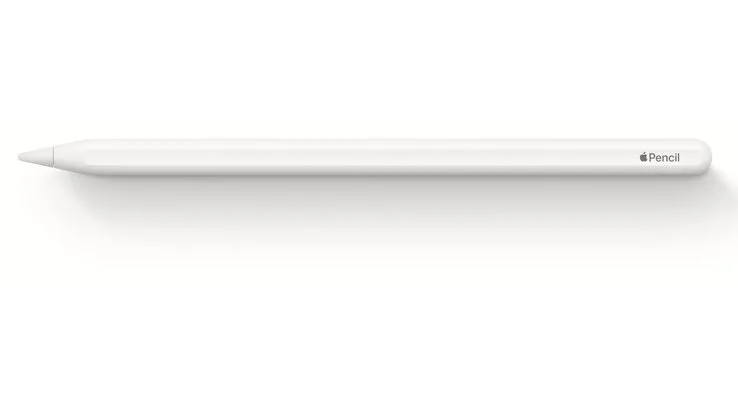
The Apple Pencil has also had a bit of an upgrade, although this may not be a plus if you’ve already got Apple’s stylus peripheral. The new model charges wirelessly by magnetically attaching to the horizontal “top” of the iPad Pro, in a similar style to the way the Surface Pen attaches to a Surface Pro 6.
Got an old, Lightning connector Apple Pencil? It won’t even pair with the new iPad Pro.
Apple also charges that way, so in theory your Apple Pencil should never go flat as long as the battery chemistry lasts. The challenge with the new model is that it’s totally incompatible with the old model.
Got an old, Lightning connector Apple Pencil? It won’t even pair with the new iPad Pro. The reverse is true too, so a new Apple Pencil is for the 2018 iPad Pro lines only.
Apple will continue to sell both types of Apple Pencil, because the earlier 10.5 inch iPad Pro is still available, as is the Apple Pencil-compatible 2018 Apple iPad, and they both work with those earlier Apple Pencils. It's a problem if you wanted to upgrade everything but your Apple Pencil, but also a fair warning to be careful when buying the Apple Pencil to ensure you get the correct model.
Apple has also produced a new version of its keyboard case for use with the iPad Pro. Again, it’s an extra you’ll have to buy if you’re keen on any kind of rapid typing. It’s a similar story to that of the Surface Pro 6, in that I can’t see too many iPad Pro buyers not opting for it.
I’m not the biggest fan of most of Apple’s peripheral design decisions, where all too often physical and usage considerations are secondary to design ideas – this is the company that gave us the no-button “magic” mouse, after all – but it seems like the iPad Pro keyboard design team snuck out under Sir Jony Ive’s watchful eye, because it’s easily the best Apple keyboard I’ve used in years.
There’s a surprising amount of travel on each key, and at least on the 12.9 inch variant I tested with, a decent amount of space between keys. You’re not stuck with the woeful flattened keyboard found on new MacBook Pro models, but instead something that’s genuinely useful and feels like it should well and truly be able to take a battering over a span of time. It’s also nicely thin, and of course it’ll protect your investment in the iPad Pro as well.Back to top
Apple iPad Pro 2018: Performance
- Apple A12X Bionic is an amazing processor.
- Apple's tight control on iOS limits what you can do.
- USB C support is a guessing game.
- FaceID works well but doesn't save time.
The 2018 iPad Pro runs on Apple’s A12X Bionic, a more powerful fork of the A12 Bionic found in the Apple iPhone XS Max, Apple iPhone XS and Apple iPhone XR. It’s a very powerful processor, and on the phones, it very much felt like Apple was sticking a heavy duty engine into a frame that didn’t entirely need it, because we’re yet to see all that many phone-based apps that need that kind of grunt.
However, on the iPad Pro it’s a different story, because Apple’s support for multitasking and split screen apps means that you can push it a lot harder, and indeed the entire point is that you should. Apps like Adobe’s Photoshop are incoming, and while I couldn’t test with that for the purposes of review, it’s quite clear that the A12X Bionic, along with the specific optimisations that Apple can bring in iOS 12 makes for a formidable pairing.
It's obviously somewhat app dependent, but to give a partial picture, here's how the Apple iPad Pro 12.9 (2018) using Apple's A12X Bionic compared on Geekbench 4's CPU test against the A12 Bionic found in Apple's 2018 iPhone crop. Bear in mind that those phones leave their Android counterparts behind by a significant margin in this test, and you'll get an idea just how much power the iPad Pro is packing:
Having said that the iPad Pro is powerful, in a comparison against more traditional laptop or desktops, it does have a somewhat unfair advantage that is also a limitation.
Photoshop, or other heavy duty applications, on a PC or Mac runs as an instance of a program amongst many. You can add additional applications running in the background, and while your performance may suffer depending on how much memory you’ve got, it’s a feasible approach to multi-tasking.
iOS, on the other hand, takes an entirely controlled approach to how many applications are truly "open" at a time, with many being effectively "paused" in the background instead of actual true multitasking. Yes, you can run multiple apps with slide over and picture-in-picture modes on an iPad Pro, and that has productivity implications, but it’s nowhere near the range and scope of a desktop PC or Mac.
Against that, Apple can more easily leverage its iPad Pro memory and processor capabilities, simply because it won’t let you do quite as much at once.
The shift to USB C is also a significant one for Apple, but it’s also one where you have to take some guesswork as to whether a given peripheral will actually work, or indeed be allowed to work.
Apple is notably reluctant to allow storage expansion on iPad models, so getting external drives to talk nicely to an iPad Pro can be a bit of guesswork; it’s easier on a DSLR, for example, but really only within photo apps. There’s no explicit guarantee that your USB C peripheral will work, especially if it’s designed to do something Apple doesn’t want you doing with an iPad Pro.
The shift to USB C is also a significant one for Apple, but it’s also one where you have to take some guesswork as to whether a given peripheral will actually work, or indeed be allowed to work.
Currently, that’s the single biggest strike against the iPad Pro as a productivity system. Yes, it’s an expensive tablet, especially at the highest storage capacity prices, but like any productivity tool, its value is entirely relative to how productive it’s going to make you as a user.
There’s very little wrong with the hardware as presented, but the limitations within the operating system could still be a challenge, and one that leaves a MacBook Pro or higher-end Windows 10 machine as a smarter choice depending on your circumstances.
The iPad Pro incorporates the FaceID camera system first seen in the Apple iPhone X for unlocking and Apple Pay verification purposes.
Apple iPhone XR
One neat feature here is that it works in both portrait and landscape orientation, although you do have to enrol your face in portrait mode. Unlocking is swift even in low light, although there’s no real speed advantage here, as you’re still going to have to swipe up the screen to unlock it in any case. Once you have to do that, it's no faster than tapping on a TouchID button.
Back to topApple iPad Pro 2018: Battery life
- Battery life is good.
- USB C recharging is a welcome change.
Apple’s claims for battery life on the iPad Pro are that it should be capable of up to 10 hours of Wi-Fi usage, or for watching video or music listening, and just a little less than that a 9 hours of web surfing if you’re using the LTE-enabled model on a mobile data network.
Battery usage on a tablet like this is always a heavily variable matter, but my own anecdotal tests certainly back this up, using the iPad Pro as a personal productivity machine. I’m mostly a writer, and to a fair extent the iPad Pro is incredible overkill for most of my word creation needs. As noted, for some other applications, I’d probably shift to a full MacBook Pro, but for portability and battery life, the iPad Pro is very good indeed.
The shift to USB C is also a welcome one from a power viewpoint, although rather predictably, the iPad Pro is somewhat fussy as to whether it'll take a charge from every single USB C power source. However, with the supplied 18W charger, it's a rapid process to top up the iPad Pro's battery.
Back to topApple iPad Pro 2018: Should you buy it?
- A lot of power, at a hefty price.
- Could raise your productivity, but for most folks the regular iPad is the better match.
Apple has done a remarkable thing with the hardware for the iPad Pro, and it’s a pretty clear sign of where it sees its mobile computing future. It’s easily the most exciting hardware it has put in a portable computer for years, with an awful lot of upside for future applications. This is especially true if you’re working in visual production for the Photoshop potential alone, but that’s only one of many potential use cases. However, iOS remains the anchor on how this all actually works.
If your workflow can be constrained to work within iOS’s limitations, especially for file portability, it could be a solid choice. However, Apple is also in competition with itself, because the practical reality here is that the existing and considerably cheaper Apple iPad 2018 is going to be enough for most people’s regular usage.
For my own writing, for example, while I’ve enjoyed using the iPad Pro 12.9 inch’s screen size and battery life, there’s little doubt I could have done the same on the regular model.
If your tablet usage is mostly in reading content, watching video or a little light social networking or email, it’s more than enough, and the iPad Pro would be a very expensive indulgence.
The iPad Pro this year is, indeed a revolutionary computer, but like so many revolutions, it’s what Apple does with its computers after this that will really make a difference.
Back to topApple iPad Pro 2018: Pricing and availability
Apple sells the iPad Pro 2018 in two screen sizes and four storage sizes, with or without an LTE SIM card capability. Pricing is as follows:
- iPad Pro 11 64GB WiFi $1,229
- iPad Pro 11 256GB WiFi $1,449
- iPad Pro 11 512GB WiFi $1,749
- iPad Pro 11 1TB WiFi $2,349
- iPad Pro 11 64GB WiFi+LTE $1,449
- iPad Pro 11 256GB WiFi+LTE $1,669
- iPad Pro 11 512GB WiFi+LTE $1,969
- iPad Pro 11 1TB WiFi+LTE $2,569
- iPad Pro 12.9 64GB WiFi $1,529
- iPad Pro 12.9 256GB WiFi $1,749
- iPad Pro 12.9 512GB WiFi $2,049
- iPad Pro 12.9 1TB WiFi $2,649
- iPad Pro 12.9 64GB WiFi+LTE $1,749
- iPad Pro 12.9 256GB WiFi+LTE $1,969
- iPad Pro 12.9 512GB WiFi+LTE $2,269
- iPad Pro 12.9 1TB WiFi+LTE $2,869
Specifications
Apple iPad Pro 2018 Specifications
- Product Name
- Apple iPad Pro 2018
- Processor
- Apple A12X Fusion
- Operating System
- iOS 12
- RAM
- 4GB
- Display
- 11 inch/12.9 inch
- Resolution
- 2388x1668 264 ppi/2732x2048 264 ppi
- Connectivity
- USB C
- Cameras
- 12MP f/1.8
- Networking
- 802.11 a/b/g/n/ac
- Size
- 247.6x178.5x5.9mm/280.6x214.9x5.9mm
- Weight
- 468g (11 inch, Wi-Fi or LTE), 631g (12.9 Wi-Fi), 633g (12.9 LTE)
- Price
- From $1,229
